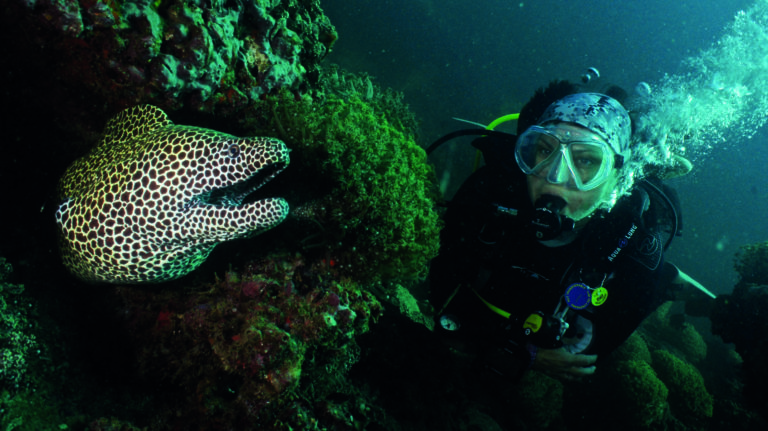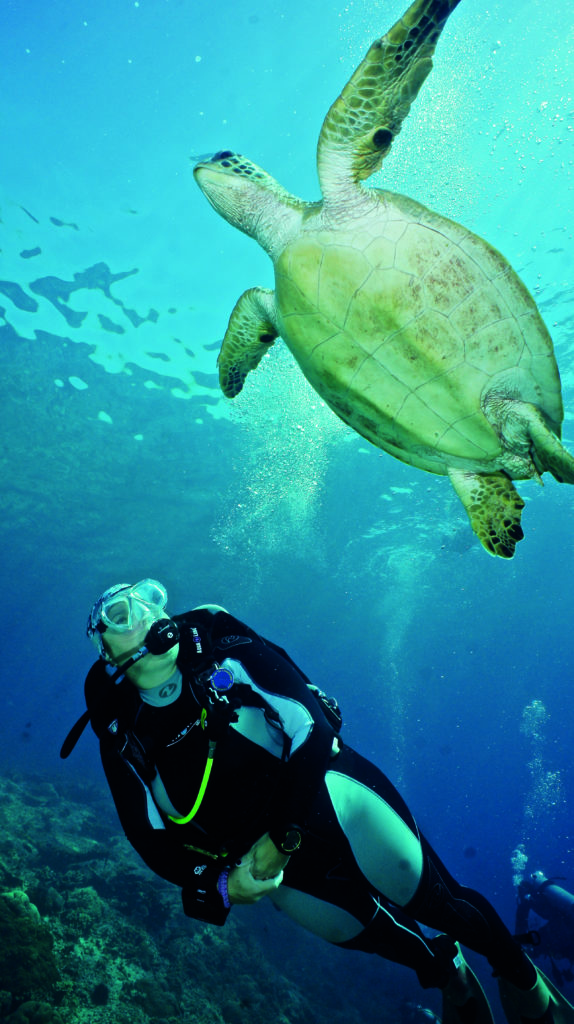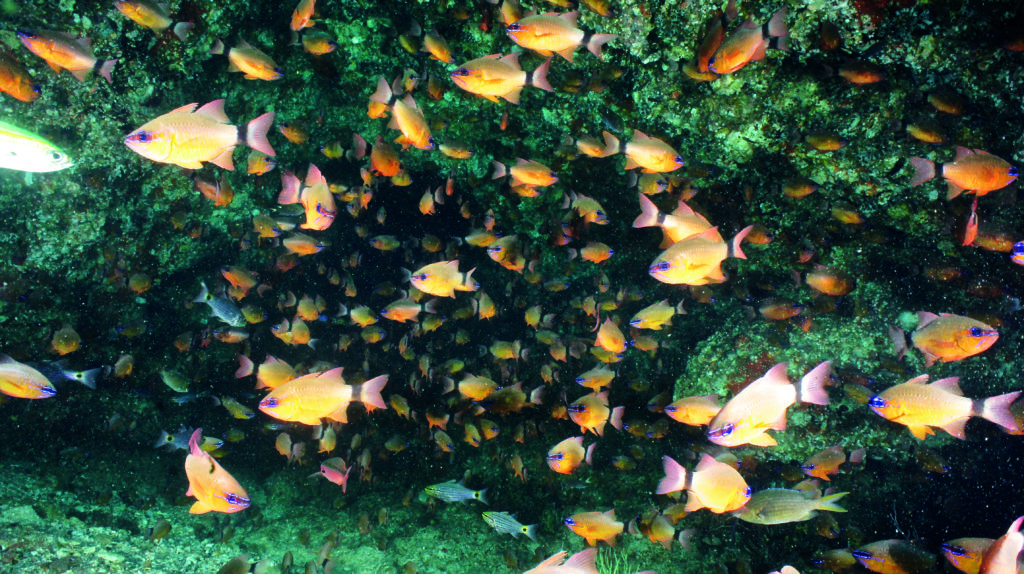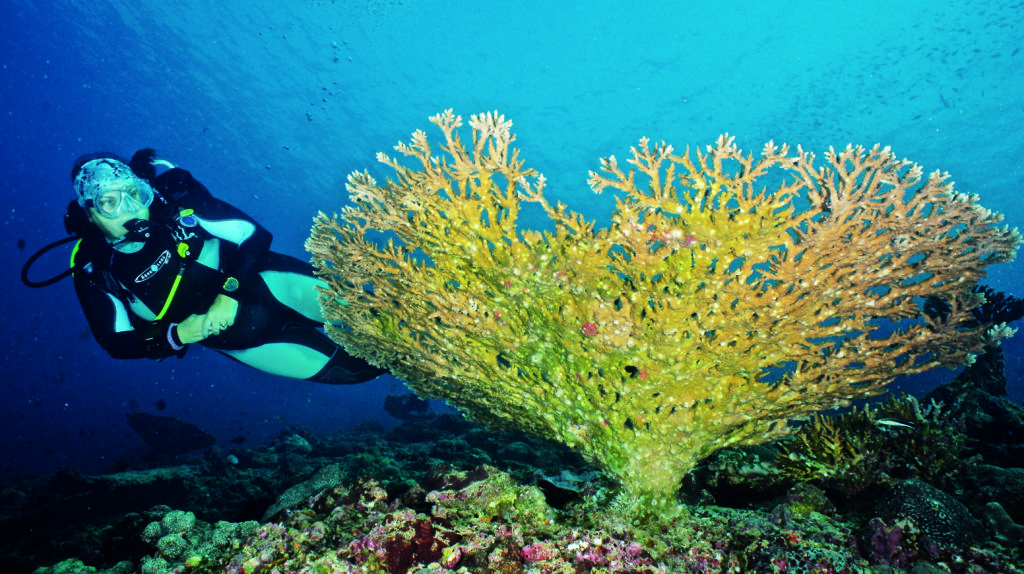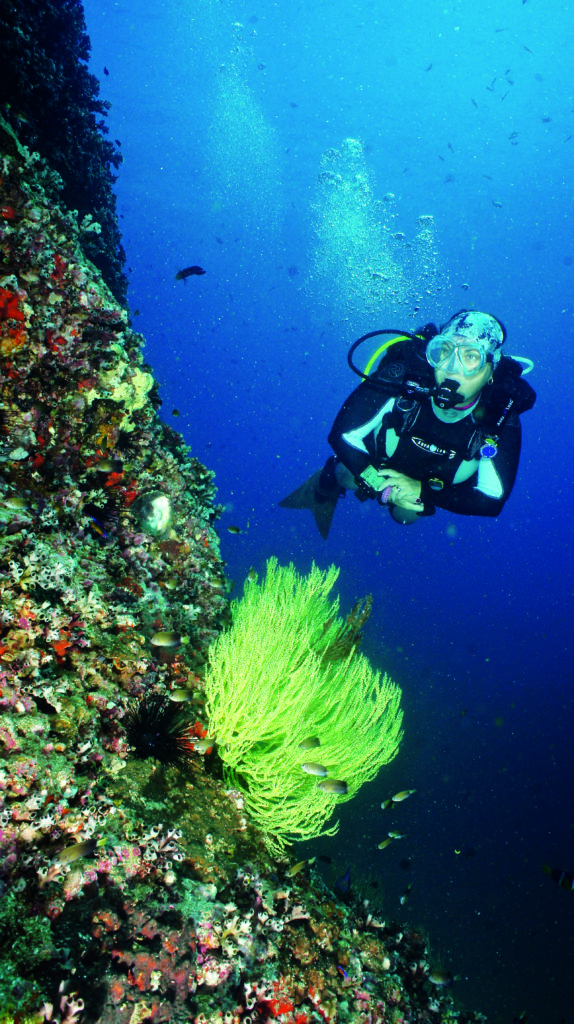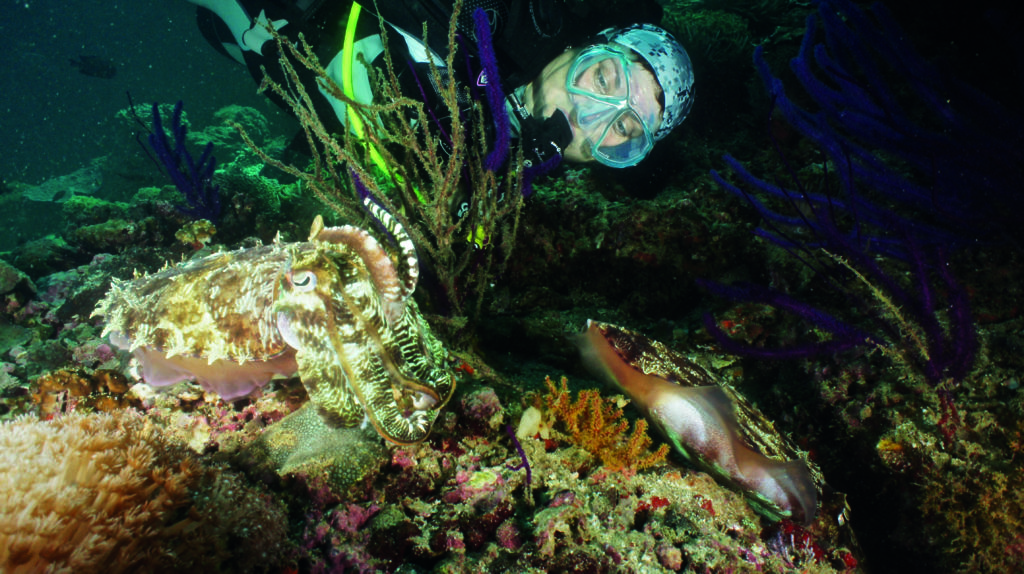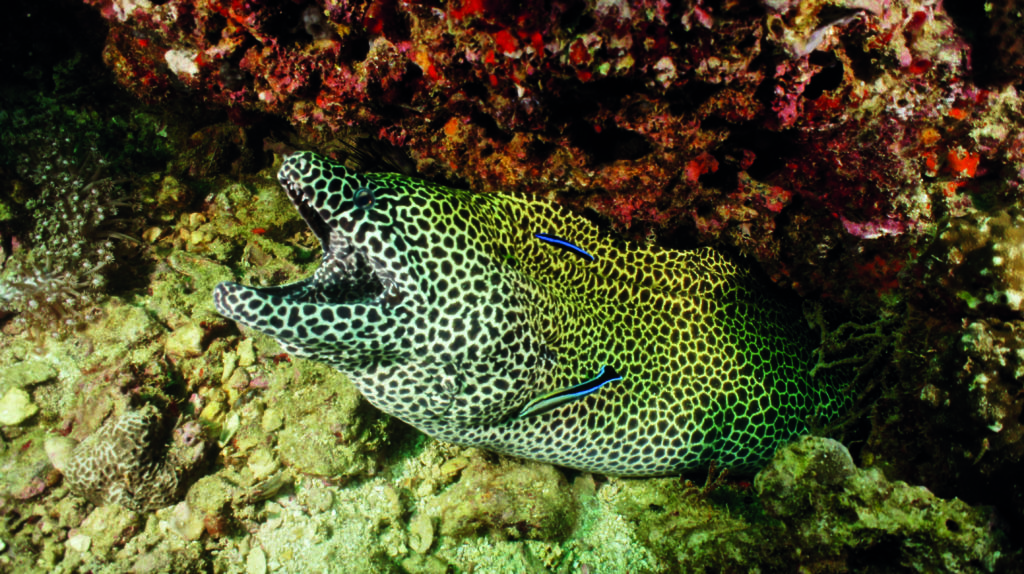Egypt and Jordan might be the automatic first thoughts when it comes to diving in the Middle East, but the sheer quality of diving off Oman suggests that it should never be overlooked, says MARK EVANS
The Sultanate of Oman, the oldest independent state in the Arab world, is not usually the first thought of divers seeking out Middle Eastern scuba-diving adventures, and this seems a shame, considering what it has to offer. It has an ever-developing tourist infrastructure, a vast array of topside activities and attractions for non-divers and divers on their “dry days“. It is also well-served in terms of flights from the UK and mainland Europe.
Visiting divers are spoilt in that while the country boasts more than 1,700km of coastline bordering three seas – the Arabian or Persian Gulf, the Gulf of Oman and the Arabian Sea – there are only a handful of dive centres and liveaboards operating there, so crowding at dive-sites need never be a concern. Don’t expect Red Sea visibility, but do prepare for your mind to be blown away by the sheer amount and diversity of marine life.
The Daymaniyats
One of Oman’s undoubted underwater jewels is the national nature reserve of the Daymaniyat Islands. This collection of nine barren, windswept islands, which are spread over 50km in three groups and lie to the north of the capital, Muscat, offers some of the best diving in the region, with the highlight scuba- diving sites being Aquarium, Garden of Eden, Three Sisters and Hayut Run.
Aquarium more than lives up to its name, and there are often so many shoals of snapper, groups of Arabian and Emperor angelfish, hordes of batfish, honeycomb morays, anemonefish and turtles there that it does make you feel as if you’re in a giant fish-tank.
Nor is it only the marine life that makes the Daymaniyats such a great experience; the underwater topography is also unique. As well as swathes of hard and soft corals, interspersed with vibrant sponges, some of the rock formations are spectacular. Swim-throughs, overhangs, nooks and crannies all help make the reef more than just interesting.
Musandam Peninsula
Often accessed via liveaboard but increasingly by land-based operations, the rugged, mountainous Musandam Peninsula is a bizarre proposition in that it belongs to Oman but is separated from the rest of the country by a 70km stretch of the United Arab Emirates.
You can encounter whale sharks in the Strait of Hormuz – one of the world’s busiest shipping lanes – and enjoy some amazing wall- and drift-diving there, characterised by the peculiar vivid purple corals that are common in Oman waters but nowhere else.
Fahal Island
Located 4km off Muscat’s most-popular tourist beach, Fahal Island – also known as Shark Island – is a large outcrop of rock that has several scuba dive-sites, ranging from shallow reefs to L-shaped cavern/swim-throughs, a tug and barge sitting in 30m, and deep reefs down at 40m and more.
Eagle rays often cruise these waters, large sting rays lounge on the bottom and several species of shark (hence the name of the island!) call these waters home. Look out for lemon, grey reef, whitetip reef and blacktip sharks at Fahal.
Bandar Khayran
The other popular option from Muscat is Bandar Khayran, which has many sheltered coves and coral reefs well-suited to all levels of diver. A popular site in this region is the troop-carrier and tank transporter Al Munassir, which was deliberately sunk in 2003 by the Royal Navy of Oman as an artificial reef.
This 84m wreck sits at a depth of only 26-30m, reaching up to within 8m of the surface, and is heavily colonised with encrusting marine growth, algae, sponges and corals. Shoals of fish swarm in and around the decks, and it is sometimes visited by larger pelagic species, including sharks and turtles.
Salalah
Some 1,000km south of Muscat, in the Dhofar region, sheltered bays overlooked by deserted beaches and dramatic mountain chains offer pristine coral reefs teeming with marine life, and in the summer months it is also possible to explore small kelp forests filled with juveniles.
This area can be affected by weather conditions, but time it right and you can enjoy some of the most remote and untouched coral-reef diving anywhere on the planet.
The Sultanate of Oman is slowly but surely being accepted onto the tourist map, but it has yet to become a hotspot – and long may it remain this way, because that gives you the opportunity to experience the “real“ Middle East away from rampant commercialism, cheap package deals and dubious all-inclusive hotels.
The people are very friendly, and genuinely pleased to welcome visitors to their country, and with only a handful of dive-centres covering the entire coastline, it is rare that that you will encounter other divers in the water, especially in Salalah.
Weather conditions are excellent, though be warned that it does get very hot during the summer months, and because of the strength of the Omani rial, it isn’t the cheapest place on the planet, but this is one of those few readily accessible locations where you can get that real “explorer” feel of heading off the beaten track.
EXTRA DIVERS
Extra Divers boasts four dive-centres in Oman – one at Mirbat in Salalah (in the far south of Oman), Qantab and Sifah near the capital Muscat, and Zighy Bay in the Musandam Peninsula – so it can offer a rich selection of dive-sites. Courses are offered for non-divers and divers, and snorkellers can also get involved at most dive-sites.
EURO-DIVERS
Based in the Marina Bandar Al Rowdha near Muscat, Euro-Divers is one of the longest-established dive-centres in the country. It offers courses for all levels of diver, and conducts dives at the Daymaniyat Islands, Fahal Island, the Al Munassir shipwreck and Bandar Khayran. Snorkellers are catered for too, making it perfect for non-diving family-members.
MUSCAT HILLS RESORT
Muscat Hills Resort is a new hospitality concept in Oman, and the first beach-club close to the capital, Muscat. Come to Al Jissah Bay and you can choose to stay in one of the 35 Barasti-style beach-huts, enjoy the private beach with the restaurant, bar and shisha lounge in close proximity, or head off to enjoy scuba diving, kayaking or snorkelling.
AGGRESSOR FLEET
Luxury liveaboard company Aggressor Fleet operates a smorgasbord of high-end dive yachts in some of the world’s most desirable diving destinations, including Galapagos, Palau, Costa Rica, Indonesia and Fiji. In Oman it has four itineraries, taking in the Daymaniyats, the Hallaniyats and the Musandam Peninsula.
Photographs by Mark Evans
More about Oman on Divernet: Surprise Surprise, Hallaniyats – An Archipelago Less Travelled, City Of Winchester Is Open
